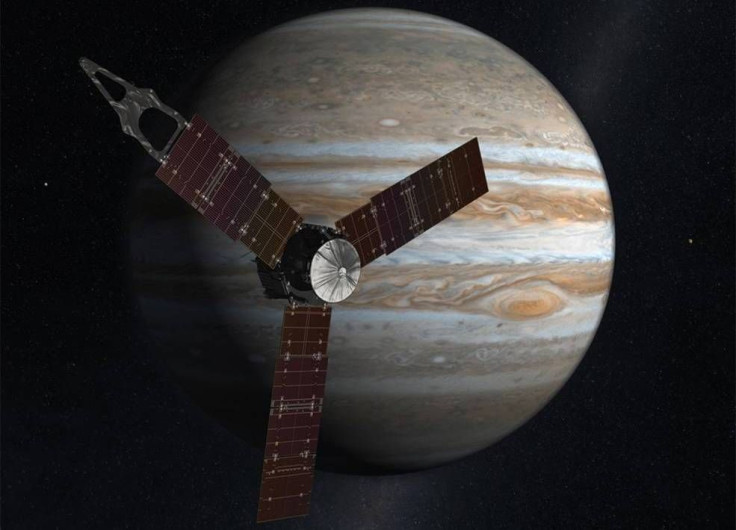NASA’s Juno To Fly Closest To Jupiter On Saturday, Soaring About 2,500 Miles Above Its Swirling Clouds

NASA’s Juno is all set for its closest approach to Jupiter on Saturday, when the spacecraft — which entered into orbit around the gas giant on July 4 — will be soaring about 2,500 miles above the planet’s swirling clouds at a speed of 130,000 miles per hour with respect to the planet.
During Saturday’s flyby, Juno will have all of its science instruments activated and looking at Jupiter while zooming past the planet. The spacecraft still has 35 more close flybys of Jupiter scheduled during its prime mission, which is expected to end in February 2018. Juno will get closer to Jupiter’s dense cloud tops on Saturday at 8:51 a.m. EDT, according to NASA.
Ready for your closeup? Saturday, I’ll come nearest to #Jupiter of any part of prime mission https://t.co/vkgLWygcdb pic.twitter.com/Zca5b5fkrA
— NASA's Juno Mission (@NASAJuno) August 25, 2016
“This is the first time we will be close to Jupiter since we entered orbit on July 4,” Scott Bolton, principal investigator of Juno from the Southwest Research Institute in San Antonio, said in a statement. “Back then we turned all our instruments off to focus on the rocket burn to get Juno into orbit around Jupiter. Since then, we have checked Juno from stem to stern and back again.”
In addition to the science instruments, Juno’s camera — JunoCam — will also be in action to snap some close-up pictures of Jupiter. According to NASA, high-resolution images of the Jovian atmosphere and the first pictures of Jupiter's north and south poles that JunoCam is expected to capture will be released sometime next week.
Launched on Aug. 5, 2011, from Cape Canaveral, Florida, Juno took a long, looping path around the inner solar system to set up an Earth flyby. Our planet's gravity then flung the spinning probe onward toward Jupiter.
The motive behind Juno’s launch was to better understand the solar system's beginnings by revealing the origin and evolution of Jupiter. The spacecraft’s main tasks include determining how much water is in Jupiter's atmosphere, mapping Jupiter's magnetic and gravity fields, and studying the planet’s poles and its northern and southern lights.
“No other spacecraft has ever orbited Jupiter this closely, or over the poles in this fashion,” said Steve Levin, Juno project scientist from NASA's Jet Propulsion Laboratory in Pasadena, California. “This is our first opportunity and there are bound to be surprises. We need to take our time to make sure our conclusions are correct.”
© Copyright IBTimes 2024. All rights reserved.






















